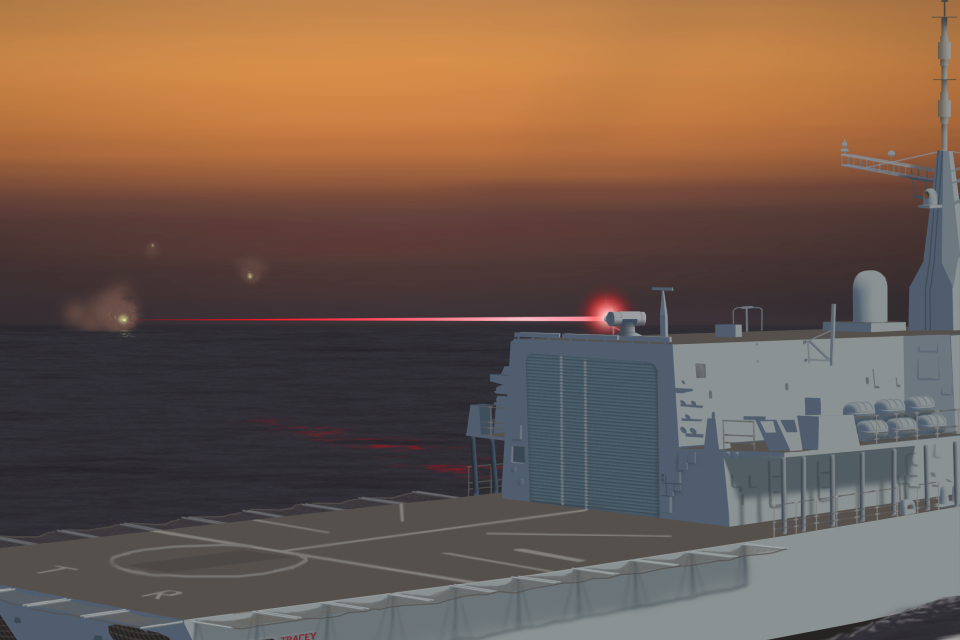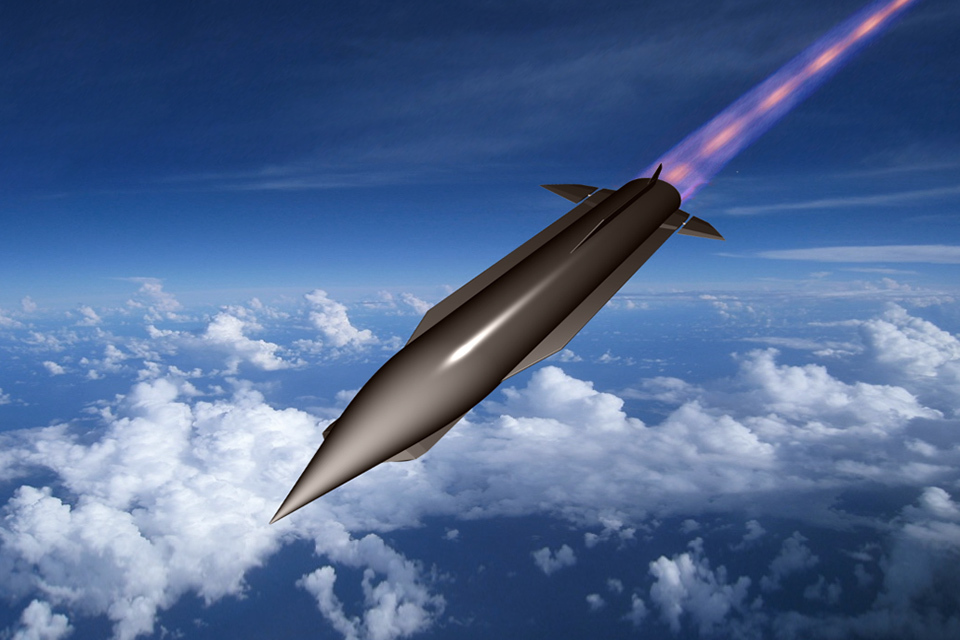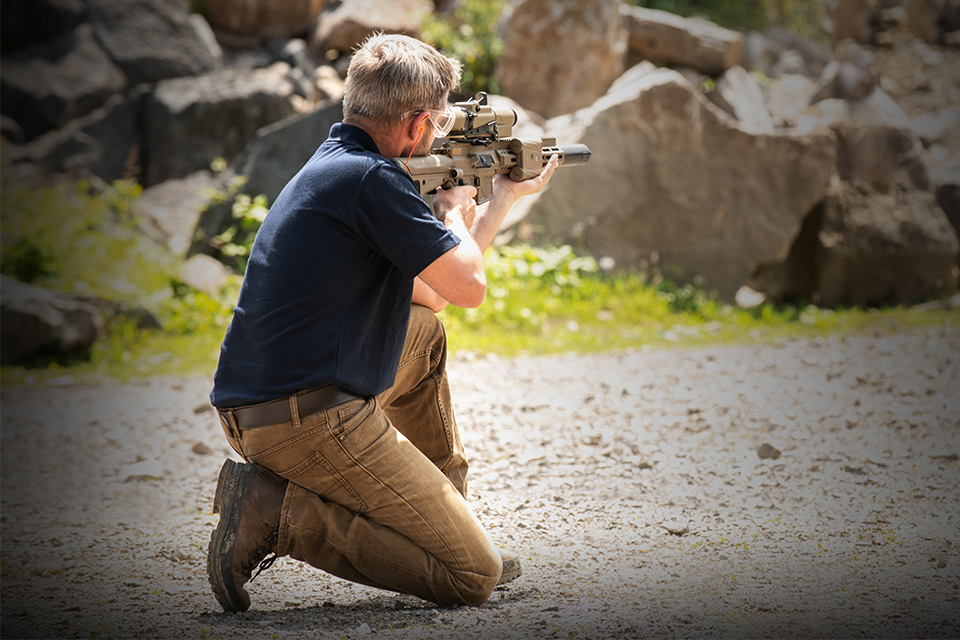Weapons: defence science and technology capability
Dstl ensures the UK armed forces have the required weapons capability through research, development and demonstration of advances in science and technology.
The Defence Science and Technology Laboratory (Dstl) works with the UK armed forces to understand and anticipate their needs for future weaponry and initiate projects that will deliver the right concepts and technology. Alongside industry, academia and international partners, we ensure the UK can meet the ‘asymmetric hard power challenge’ described in the Ministry of Defence (MOD) Science and Technology Strategy 2020.
Weapons research has been identified and funded as a priority in the Integrated Review, to support the modernisation of the armed forces and invest in advanced and next-generation technologies, such as advanced high-speed missiles and directed energy weapons.
Our work ranges from carrying out fundamental research and supporting the maturation of technology, to conducting technology and capability demonstrations and providing direct support to MOD’s equipment programmes.

Computer-generated image illustrating the use of a directed energy weapon on a Type 23 Frigate. Crown Copyright.
Accelerating science from concept to in-service
We speed up and mature technical innovations, working with partners to develop ‘demonstrators’ (working prototypes) that quickly get the latest research into the hands of end users for testing in the field.
As part of Team Hersa, we are working with Defence Equipment and Support (DE&S), other parts of the MOD and industry partners to accelerate research in laser and radio frequency (RF) directed energy weapons, and bring new technologies into service with the armed forces as soon as possible.
These next-generation technologies can give frontline personnel more flexibility, reduce the risk of collateral damage and be more cost effective than current systems. It builds on the work carried out by the DragonFire consortium.
As a result of this work, MOD has awarded contracts worth around £72.5 million to UK industry to produce advanced laser and radio frequency demonstrators. They will be hosted on military vehicles and a Royal Navy vessel, enabling service personnel to trial the latest technology in real-world situations.

Computer-generated image illustrating the use of radio frequency directed energy weapons, on a MAN SV truck. Crown Copyright.
Investment to overcome complex challenges
We bring together cutting-edge technologies developed by scientists and engineers in industry and academia, alongside our own expertise, to find ways to revolutionise the future battlefield and support modernisation initiatives such as Future Soldier.
For example, Dstl is developing high speed and hypersonic weapon concepts. Hypersonic and high speed systems have the potential to enable weapons to travel further distances or be deployed before an adversary has time to react, giving armed forces a wider range of possible targets and keeping launch platforms safer.
As well as looking at our own use of these systems, we also need to protect our armed forces from potential adversaries using this type of weapon.
Dstl is working with the military, industry, academia and close international partners to develop a number of concepts and prototypes that can be tested and help the UK make decisions about what future capability is needed. This is one of our current priorities for weapons research and funding following the Integrated Review.

Illustration of a high speed missile
Modernising systems
We develop next-generation offensive capability and improved protection for our armed forces, upgrading current technology such as the British Army’s anti-armour capabilities, and looking ahead to meet future potential threats.
Working with industry partners, Dstl has delivered a next-generation prototype assault rifle with increased range, integrated data and power and a radically improved surveillance and target acquisition system. It’s the first assault rifle that can communicate with other weapons systems and uncrewed aerial vehicles (UAVs). The prototype will continue to be developed, including exploring the idea of integrating artificial intelligence (AI) to detect targets.

The Future Individual Lethality System (FILS) prototype assault rifle.
Dstl also played an instrumental part throughout the research and development of the new SPEAR3 surface-attack missile, from piloting new ways of working with industry to the technical assurance of the 7-year £550 million contract. The team provided operational analysis and scientific know-how during assessment and, throughout the weapon development phase, offered assurance that the missile provides adequate lethality whilst minimising collateral damage.
Communication and co-operation to solve military challenges
We are investigating how inter-missile communication can be used to enable systems to work together and make missions more likely to succeed.
Introducing co-operative behaviour and sharing information between missiles will improve the performance of current systems. They will be more flexible and able to react to a changing threat or situation as it emerges.
Through the Co-operative Strike Weapons Technology Demonstrator (CSWTD), Dstl scientists are working with our industry partner to assess different military tactics and scenarios. We plan to engage further with industry and academia to deliver the foundations for future co-operative missile hardware and software, and help the UK armed forces understand how they can be used in real operational scenarios.
Cooperative Missile Technology
Capability areas
Our weapons systems capability brings together a broad range of scientific and technical disciplines to support the full lifecycle of development, from refining requirements to bringing new concepts into service.
Areas covered included:
- complex weapons
- threat weapons
- novel weapons and effects
- general munitions
- non-lethal weapons
- hypersonics and high speed weapons
Work with us
Job opportunities
We are always looking for talented individuals to join us, whether you’re interested in our apprenticeship schemes, working towards a PhD or are an established specialist in disciplines such as radio-frequency engineer or lasers.
You will work on real-world problems alongside some of the brightest minds in government, industry and academia, and have the chance to broaden your experience across a range of areas.
You’ll have the chance to see your science and technology expertise put into practice, including hugely exciting opportunities for overseas travel and working with the UK’s allies, such as the US and Australia.
We’re a flexible employer and support our colleagues to achieve a good work-life balance.
-
Find out more about the benefits of working for Dstl
- Read the first hand account of one of our technical leads, Mark Pickering, who enjoys the process of turning new ideas into practical solutions
- Hear from Jessica who spent 2 months in California as part of her roles as a weapon systems effects analyst
- Find out how Dr Tim Kendall became a laser physicist
- See all Dstl’s current vacancies
Opportunities for suppliers
There are several routes to working with us. We welcome companies who have not worked with defence before, including small and medium-sized enterprises (SMEs) who have developed relevant ideas and technology, for example in laser energy weapons.
The main procurement frameworks we use are:
- Weapons Sector Research Framework (WSRF)
- Complex Weapons Innovation and Technology Partnership (CWITP), an Anglo-French initiative which funds proposals from industry and academia to develop new technologies for missiles systems
We occasionally promote funding opportunities through DASA and you can sign up to Research Cloud to be matched with relevant opportunities.
Partnerships and projects
We work closely with international partners and a range of academic bodies including the University of Oxford and Imperial College London, for example collaborating to support PhD programmes in hypersonic science and on related work such as AI and data science.
Contact us
We are continually horizon-scanning and looking to capture ideas around new and emerging weapons technology. Share your ideas and talk to us about potential future partnerships and projects by emailing centralenquiries@dstl.gov.uk